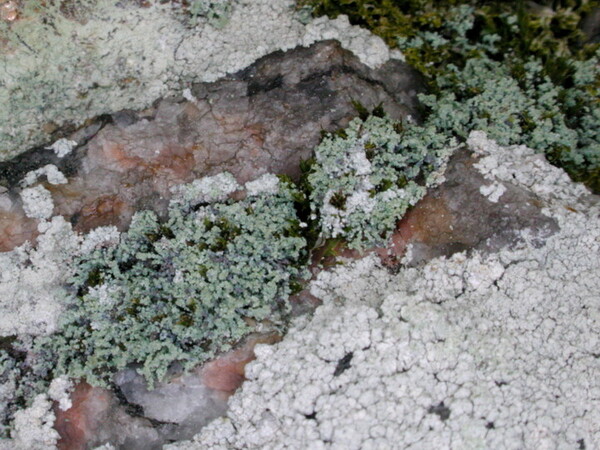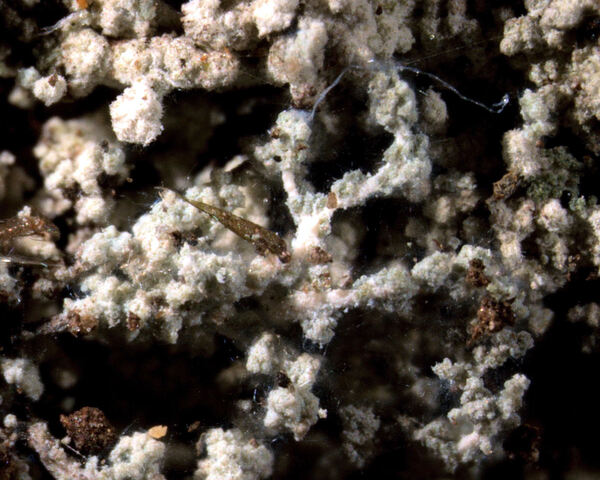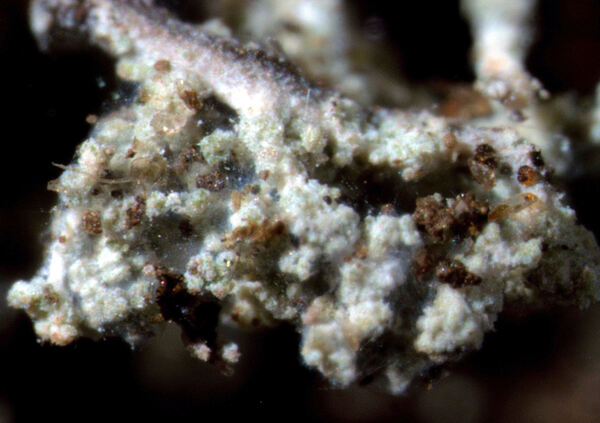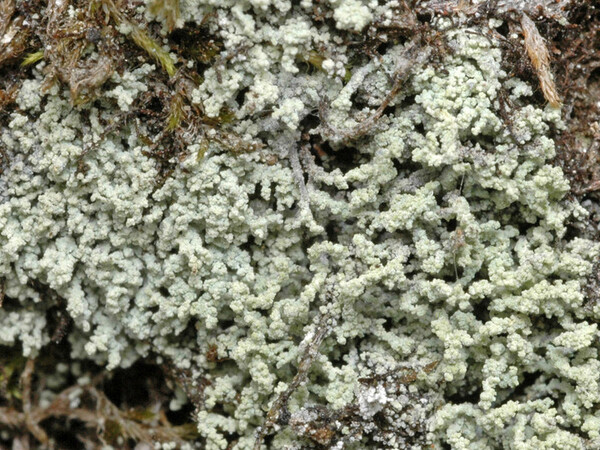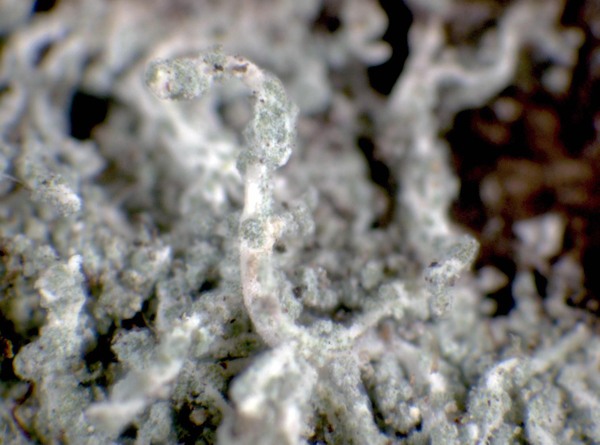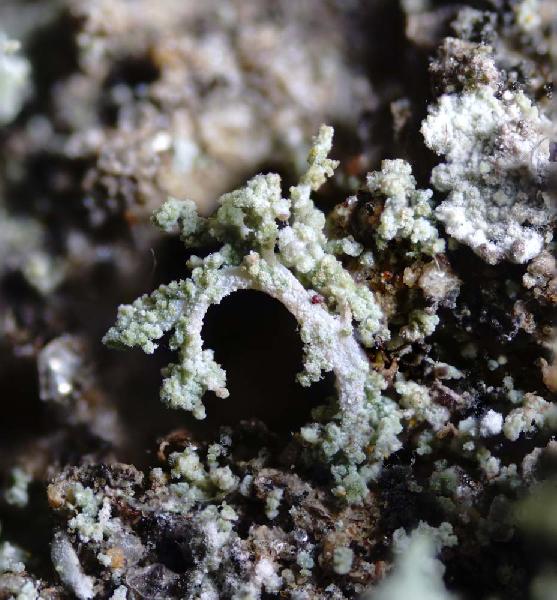Leprocaulon quisquiliare (Leers) M. Choisy
Bull. Mens. Soc. Linn. Soc. Bot. Lyon, 19: 166, 1950. Basionym: Lichen quisquiliaris Leers - Fl. Herborn.: 264, 1775.
Synonyms: Leprocaulon microscopicum (Vill.) Gams; Leprocaulon nanum (Ach.) Nyl.; Lichen microscopicus Vill.; Stereocaulon microscopicum (Vill.) Frey; Stereocaulon nanum (Ach.) Ach.; Stereocaulon quisquiliare (Leers) Hoffm.
Distribution: N - VG, Ven, TAA (Obermayer 2004, Nascimbene & al. 2007b), Lomb (Zocchi & al. 1997, De Vita & Valcuvia 2004, Furlanetto 2010), Piem (Castino 2004, Isocrono & al. 2004, 2007), VA (Piervittori & Isocrono 1999, Valcuvia & al. 2000b), Lig (Castello & al. 1994, Giordani & al. 2001, 2002, Brunialti & Giordani 2003, Giordani 2006). C - Tosc (Loppi & Corsini 1995, 2003, Loppi & al. 1995, 1996, 1996c, 1997e, 2002, 2004, 2004c, Loppi & Putortì 1995b, Pišút 1997, Putortì & al. 1999, Benesperi 2000a, Senese & Critelli 2000, Loppi & Frati 2006, Paoli & al. 2012, Brackel 2015), Umb (Panfili 2000b, 2007, Ravera & al. 2006), Laz (Massari & Ravera 2002, Munzi & al. 2007, Genovesi & al. 2011, Zucconi & al. 2013, Brackel 2015, Scatigno & Ravera 2015), Sar (Zedda 1995, 2002, 2002b, Nöske 2000, Zedda & Sipman 2001, Rizzi & al. 2011, Di Nuzzo & al. 2022). S - Camp (Ricciardi & al. 2000, Aprile & al. 2002, Nimis & Tretiach 2004, Garofalo & al. 2010, Catalano & al. 2016), Pugl, Bas (Potenza 2006, Potenza & Fascetti 2012), Cal (Puntillo 1996, Puntillo & Puntillo 2004, Incerti & Nimis 2006), Si (Poli & al. 1995, Nimis & al. 1996b, Ottonello & Romano 1997, Grillo 1998, Grillo & al. 2001, Grillo & Caniglia 2004, Brackel 2008b, Grillo & Cataldo 2008, 2008b, Ottonello & al. 2011, Puglisi & Cataldo 2019).
Description: Thallus small-fruticose, consisting of a dense mass of delicate, loosely attached, white pseudopodetia densely covered in bluish- to yellowish-green, leprose-arachnoid, ecorticate granules (35-100 µm in diam.), the whole forming a subleprose crust. Primary thallus leprose-granulose. Pseudopodetia 0.1-0.3 mm thick, 2-6 mm long, cylindrical, entangled to ascending, simple to sparingly branched in distal parts, with a whitish central axis composed of 2.5-3 µm thick, parallel hyphae, and an outer layer of loosely interwoven hyphae, in the herbarium usually developing (after several years) a very fine, bluish to whitish, mold-like covering of crystals. Apothecia and pycnidia unknown. Photobiont chlorococcoid. Spot tests: K- or K+ faintly yellow, C-, KC- or KC+ yellowish, P- or P+ faintly yellow. Chemistry: usnic acid and zeorin, plus some unidentified accessory substances.Note: a mainly mild-temperate to Mediterranean lichen found on basic siliceous rocks covered by a thin film of soil; very common on brick walls in archaeological areas of Tyrrhenian Italy, where it is also found on bark (e.g. of Olea), extremely rare along the eastern side of the Peninsula, exceptionally reaching the montane belt in the western Alps. For nomenclatural matters see Lendemer & Hodkinson (2013).
Growth form: Fruticose
Substrata: rocks, bark, soil, terricolous mosses, and plant debris
Photobiont: green algae other than Trentepohlia
Reproductive strategy: mainly asexual, by isidia, or isidia-like structures (e.g. schizidia)
Most common in areas with a humid-warm climate (e.g. most of Tyrrenian Italy)
Commonnes-rarity: (info)
Alpine belt: absent
Subalpine belt: absent
Oromediterranean belt: absent
Montane belt: extremely rare
Submediterranean belt: very rare
Padanian area: absent
Humid submediterranean belt: very common
Humid mediterranean belt: rather common
Dry mediterranean belt: absent

Predictive model
Herbarium samples
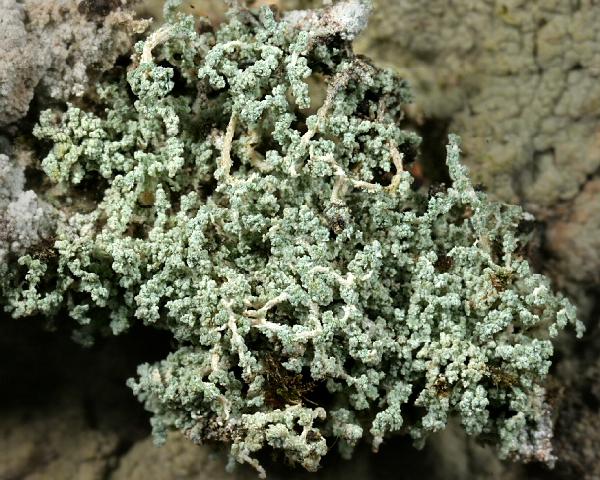
Ulrich Kirschbaum CC BY-SA 4.0 - Source: https://www.thm.de/lse/ulrich-kirschbaum/flechtenbilder
Central Europe; Germany: Hesse. (150 m above sea level). (Coll/ident: Eichler/Cezanne).
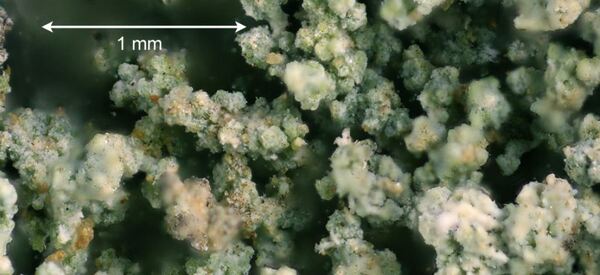

Felix Schumm – CC BY-SA 4.0
[12322], Griechenland, N-Samos, südlich Avlakia an der Straße oberhalb Vourliotes beim Kloster M. Vronda, 37°48'N, 26°51'E, 490 m; Glimmerschiefergebiet; in Mauerritzen. Leg. Schumm, Düll & Maier 03.05.2006, det. Schumm 2006
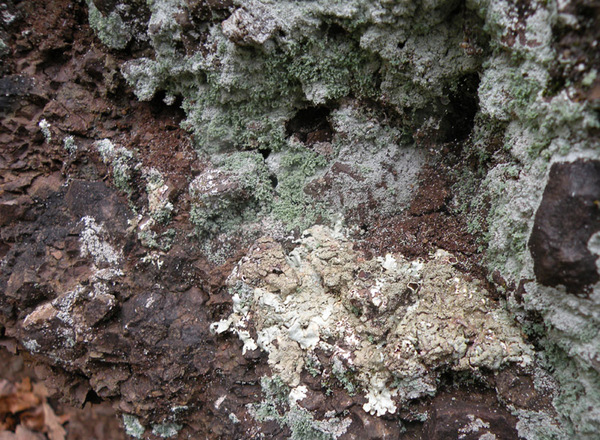
Paolo Fontanesi; Owner: Paolo Fontanesi
Italy, Emilia-Romagna, Riserva Naturale Orientata Rupe di Campotrera.
Herbarium: Forum Natura Mediterraneo
2010

Paolo Fontanesi; Owner: Paolo Fontanesi
Italy, Emilia-Romagna, Riserva Naturale Orientata Rupe di Campotrera.
Herbarium: Forum Natura Mediterraneo
2010
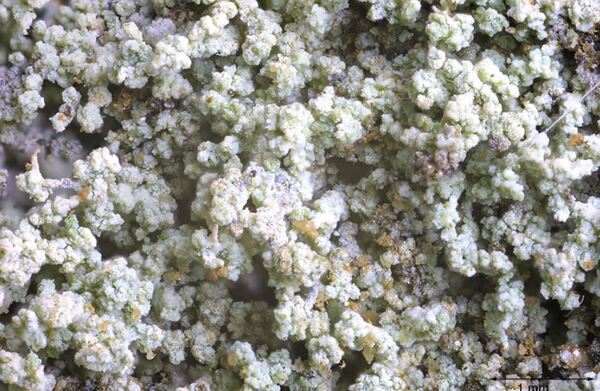

Felix Schumm – CC BY-SA 4.0
[12322], Griechenland, N-Samos, südlich Avlakia an der Straße oberhalb Vourliotes beim Kloster M. Vronda, 37°48'N, 26°51'E, 490 m; Glimmerschiefergebiet; in Mauerritzen. Leg. Schumm, Düll & Maier 03.05.2006, det. Schumm 2006
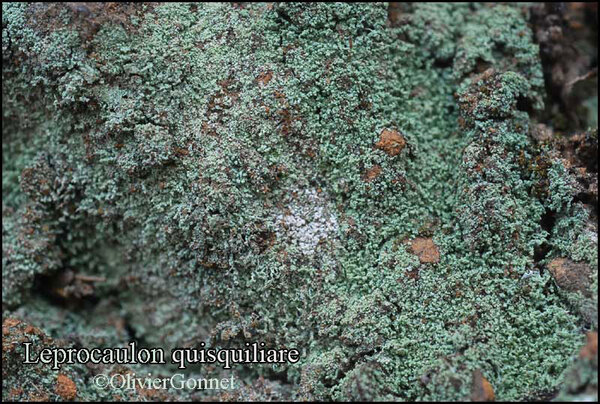
Courtesy Danièle et Olivier Gonnet - Source: https://www.afl-lichenologie.fr/Photos_AFL/Photos_AFL_L/Texte_L_4/Leprocaulon_quisquiliare.htm
France, sur roches calcaires - session AFL Luberon 2008 - Vaucluse
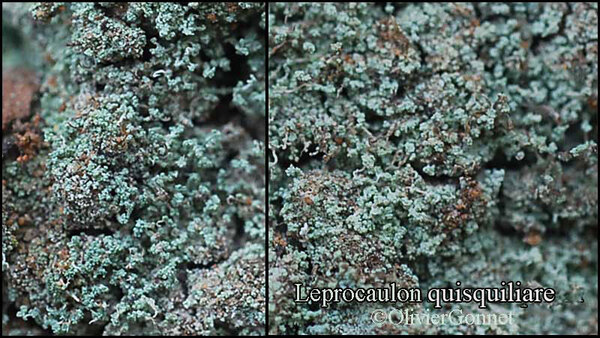
Courtesy Danièle et Olivier Gonnet - Source: https://www.afl-lichenologie.fr/Photos_AFL/Photos_AFL_L/Texte_L_4/Leprocaulon_quisquiliare.htm
France, sur roches calcaires - session AFL Luberon 2008 - Vaucluse

Bernard Bouffinier - Source: http://www.lichensmaritimes.org/index.php?task=fiche&lichen=134&lang=en
France, Landévennec Abbaye
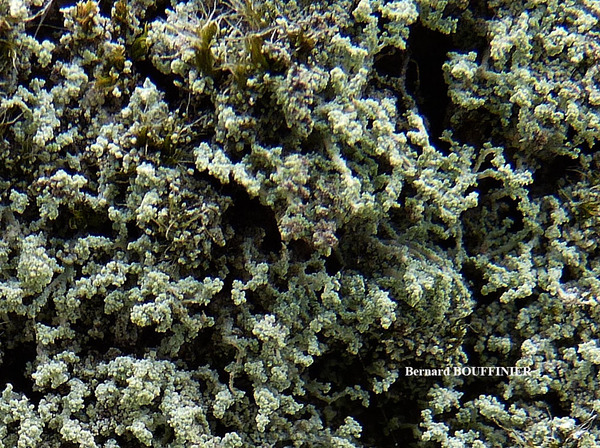
Bernard Bouffinier - Source: http://www.lichensmaritimes.org/index.php?task=fiche&lichen=134&lang=en
France, Coadry
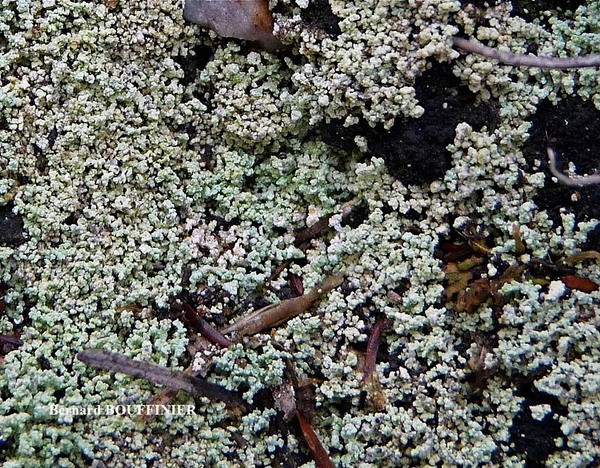
Bernard Bouffinier - Source: http://www.lichensmaritimes.org/index.php?task=fiche&lichen=134&lang=en
France, Pointe de Pen-Hir

Bernard Bouffinier - Source: http://www.lichensmaritimes.org/index.php?task=fiche&lichen=134&lang=en
France, Tregarvan
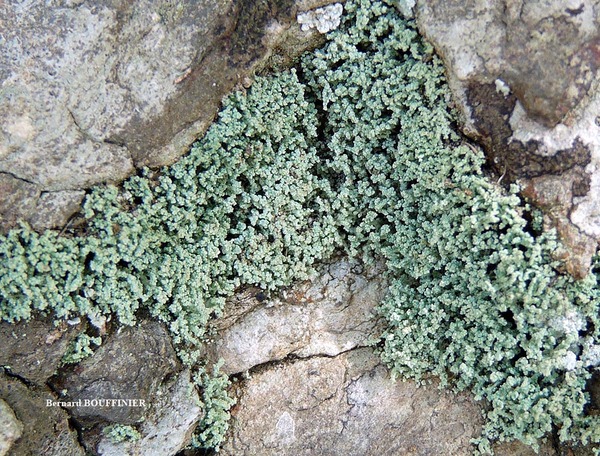
Bernard Bouffinier - Source: http://www.lichensmaritimes.org/index.php?task=fiche&lichen=134&lang=en
France, Reun ar C'hrank

Bernard Bouffinier - Source: http://www.lichensmaritimes.org/index.php?task=fiche&lichen=134&lang=en
France, Le Fret
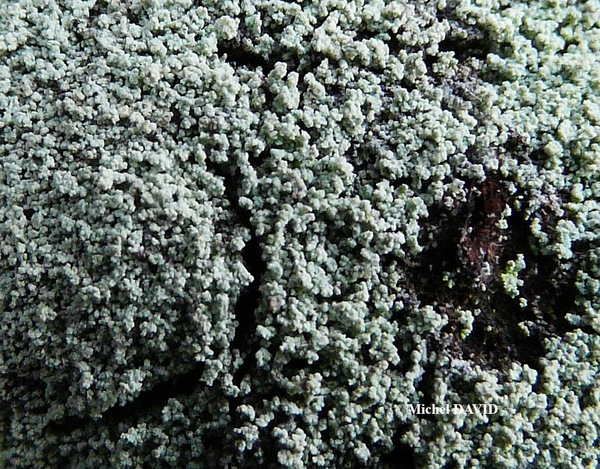
Michel David - Source: http://www.lichensmaritimes.org/index.php?task=fiche&lichen=134&lang=en
France, Pointe de Cornouaille
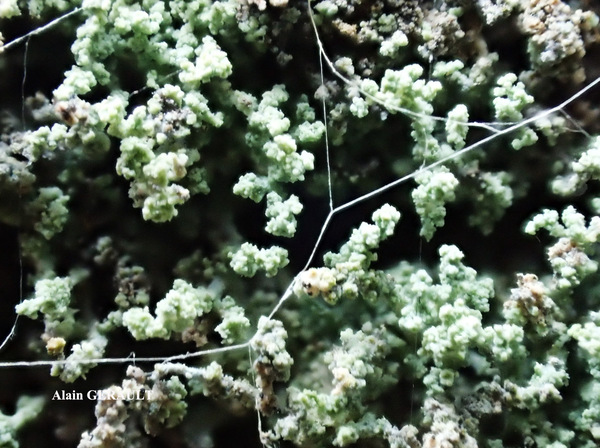
Alain Gerault - Source: http://www.lichensmaritimes.org/index.php?task=fiche&lichen=134&lang=en
France, Concarneau
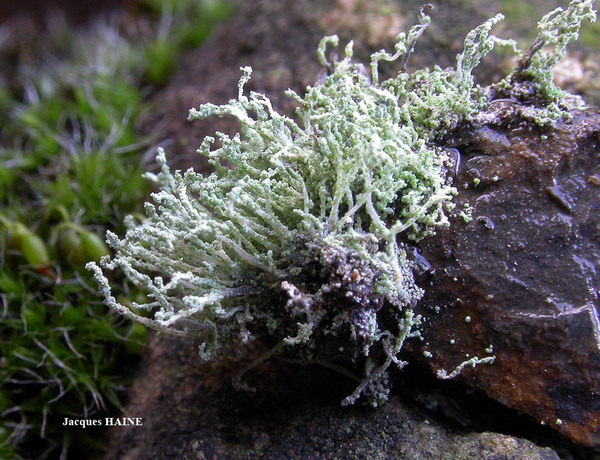
Jacques Haine - Source: http://www.lichensmaritimes.org/index.php?task=fiche&lichen=134&lang=en
France
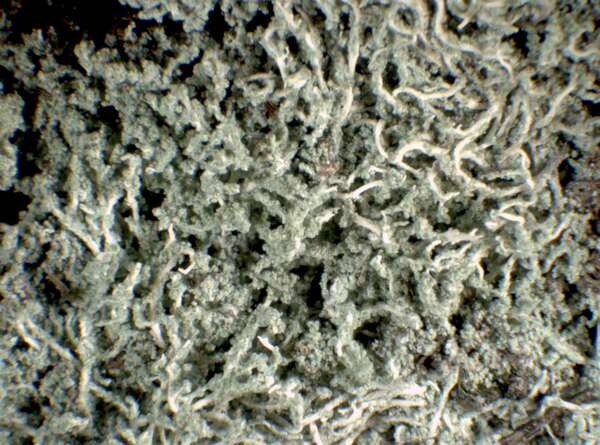

P.L. Nimis; Owner: Department of Life Sciences, University of Trieste
Herbarium: TSB (31210)
2001/12/07
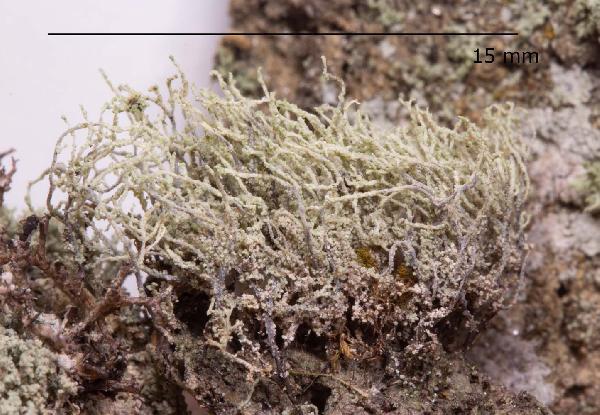
Marta González Garcia - Centro de Estudios Micologicos Asturianos
Spain, Valdoré (León), PR-(Le) 36, 23-VII-2024, entre rocas ácidas, leg. & det. M. González, MGG-133.
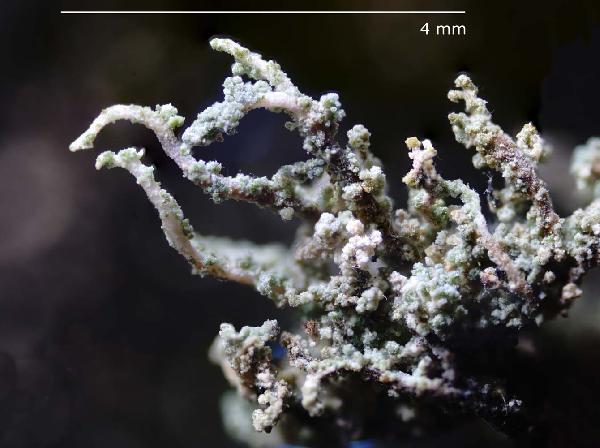
Marta González Garcia - Centro de Estudios Micologicos Asturianos
Spain, Valdoré (León), PR-(Le) 36, 23-VII-2024, entre rocas ácidas, leg. & det. M. González, MGG-133.
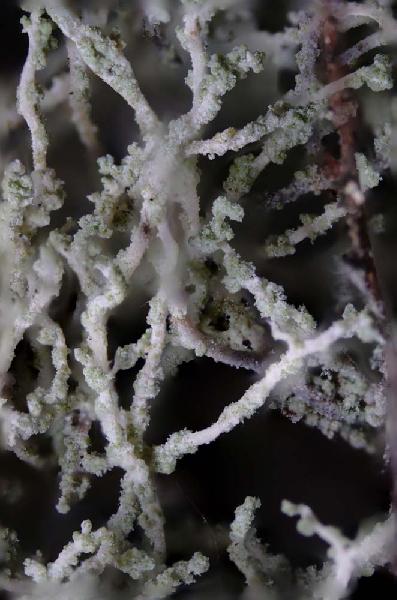
Marta González Garcia - Centro de Estudios Micologicos Asturianos
Spain, Valdoré (León), PR-(Le) 36, 23-VII-2024, entre rocas ácidas, leg. & det. M. González, MGG-133.
Growth form: Fruticose
Substrata: rocks, bark, soil, terricolous mosses, and plant debris
Photobiont: green algae other than Trentepohlia
Reproductive strategy: mainly asexual, by isidia, or isidia-like structures (e.g. schizidia)
Most common in areas with a humid-warm climate (e.g. most of Tyrrenian Italy)
Commonnes-rarity: (info)
Alpine belt: absent
Subalpine belt: absent
Oromediterranean belt: absent
Montane belt: extremely rare
Submediterranean belt: very rare
Padanian area: absent
Humid submediterranean belt: very common
Humid mediterranean belt: rather common
Dry mediterranean belt: absent

Predictive model
| Herbarium samples |

Ulrich Kirschbaum CC BY-SA 4.0 - Source: https://www.thm.de/lse/ulrich-kirschbaum/flechtenbilder
Central Europe; Germany: Hesse. (150 m above sea level). (Coll/ident: Eichler/Cezanne).


Felix Schumm – CC BY-SA 4.0
[12322], Griechenland, N-Samos, südlich Avlakia an der Straße oberhalb Vourliotes beim Kloster M. Vronda, 37°48'N, 26°51'E, 490 m; Glimmerschiefergebiet; in Mauerritzen. Leg. Schumm, Düll & Maier 03.05.2006, det. Schumm 2006

Paolo Fontanesi; Owner: Paolo Fontanesi
Italy, Emilia-Romagna, Riserva Naturale Orientata Rupe di Campotrera.
Herbarium: Forum Natura Mediterraneo
2010

Paolo Fontanesi; Owner: Paolo Fontanesi
Italy, Emilia-Romagna, Riserva Naturale Orientata Rupe di Campotrera.
Herbarium: Forum Natura Mediterraneo
2010


Felix Schumm – CC BY-SA 4.0
[12322], Griechenland, N-Samos, südlich Avlakia an der Straße oberhalb Vourliotes beim Kloster M. Vronda, 37°48'N, 26°51'E, 490 m; Glimmerschiefergebiet; in Mauerritzen. Leg. Schumm, Düll & Maier 03.05.2006, det. Schumm 2006

Courtesy Danièle et Olivier Gonnet - Source: https://www.afl-lichenologie.fr/Photos_AFL/Photos_AFL_L/Texte_L_4/Leprocaulon_quisquiliare.htm
France, sur roches calcaires - session AFL Luberon 2008 - Vaucluse

Courtesy Danièle et Olivier Gonnet - Source: https://www.afl-lichenologie.fr/Photos_AFL/Photos_AFL_L/Texte_L_4/Leprocaulon_quisquiliare.htm
France, sur roches calcaires - session AFL Luberon 2008 - Vaucluse

Bernard Bouffinier - Source: http://www.lichensmaritimes.org/index.php?task=fiche&lichen=134&lang=en
France, Landévennec Abbaye

Bernard Bouffinier - Source: http://www.lichensmaritimes.org/index.php?task=fiche&lichen=134&lang=en
France, Coadry

Bernard Bouffinier - Source: http://www.lichensmaritimes.org/index.php?task=fiche&lichen=134&lang=en
France, Pointe de Pen-Hir

Bernard Bouffinier - Source: http://www.lichensmaritimes.org/index.php?task=fiche&lichen=134&lang=en
France, Tregarvan

Bernard Bouffinier - Source: http://www.lichensmaritimes.org/index.php?task=fiche&lichen=134&lang=en
France, Reun ar C'hrank

Bernard Bouffinier - Source: http://www.lichensmaritimes.org/index.php?task=fiche&lichen=134&lang=en
France, Le Fret

Michel David - Source: http://www.lichensmaritimes.org/index.php?task=fiche&lichen=134&lang=en
France, Pointe de Cornouaille

Alain Gerault - Source: http://www.lichensmaritimes.org/index.php?task=fiche&lichen=134&lang=en
France, Concarneau

Jacques Haine - Source: http://www.lichensmaritimes.org/index.php?task=fiche&lichen=134&lang=en
France


P.L. Nimis; Owner: Department of Life Sciences, University of Trieste
Herbarium: TSB (31210)
2001/12/07

Marta González Garcia - Centro de Estudios Micologicos Asturianos
Spain, Valdoré (León), PR-(Le) 36, 23-VII-2024, entre rocas ácidas, leg. & det. M. González, MGG-133.

Marta González Garcia - Centro de Estudios Micologicos Asturianos
Spain, Valdoré (León), PR-(Le) 36, 23-VII-2024, entre rocas ácidas, leg. & det. M. González, MGG-133.

 Index Fungorum
Index Fungorum
 GBIF
GBIF


